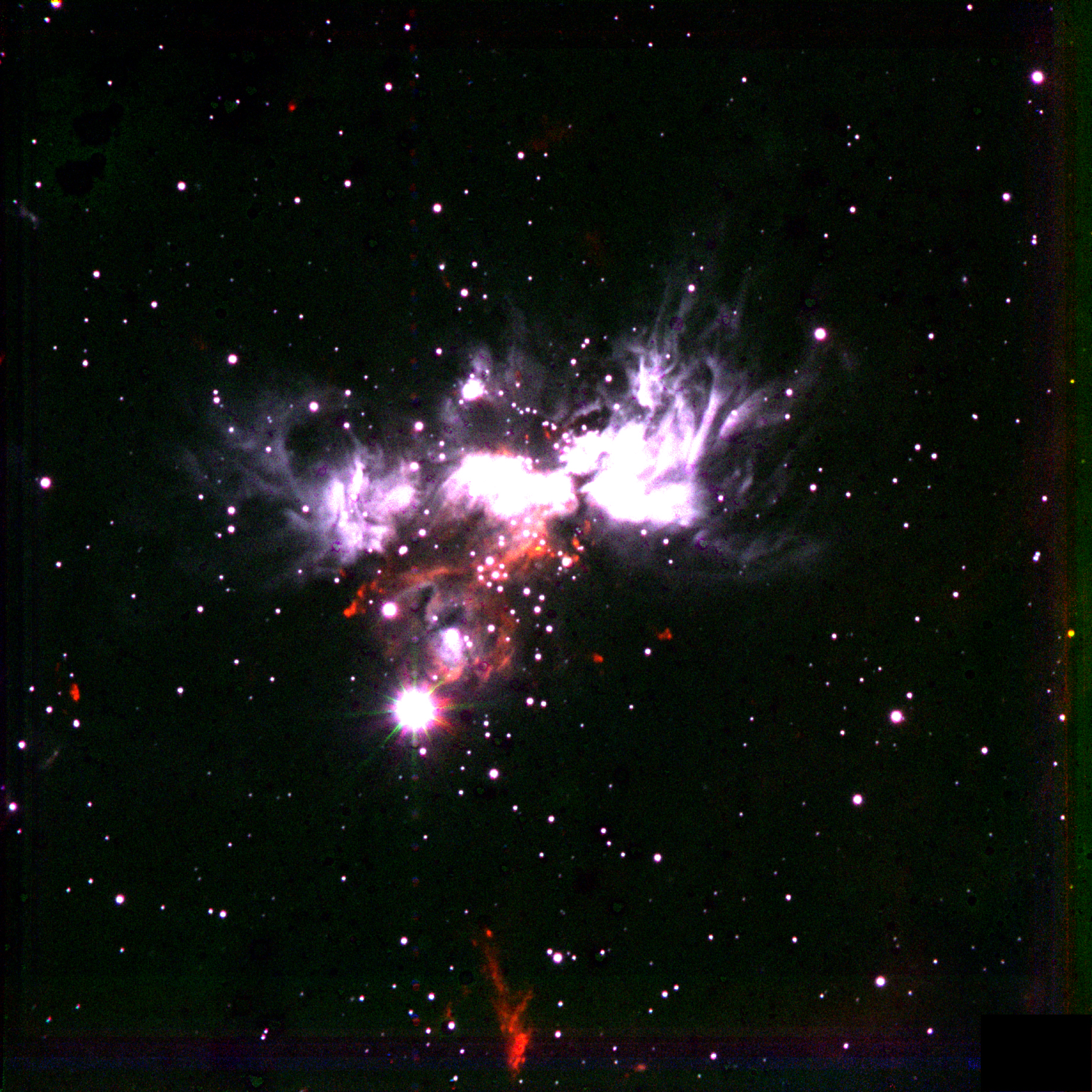The AFGL 5180 region, cradle of giant forming stars, reveals its secrets in the infrared
The Instituto de Astrofísica de Andalucía (IAA-CSIC) leads a study that reveals, in unprecedented detail, a region of massive star formation
Massive stars play a key role in the evolution of the universe: they are the main source of heavy elements and affect the process of star and planet formation, as well as the structure of galaxies. However, we do not yet have an established model of how they are born and evolve. An international scientific team, led by the IAA-CSIC, has observed the star-forming region AFGL 5180, the cradle of many massive stars, at very high infrared resolution, allowing a census of stars in the region to be made. This study, which has been published in Astronomy & Astrophysics, has also revealed numerous outflows of gas expelled by the stars, as well as their complex morphology.
Our lack of knowledge about the early stages of massive stars is due to several factors, including their rarity or their formation within dust-obscured regions. “One of the most exciting aspects of our work in AFGL 5180 is that we have been able to pair very high-resolution infrared data on the protostellar outflows with sub-millimeter data from ALMA that reveals the protostars themselves, still deeply embedded in their dusty natal envelopes. This intricate set of data gives us a detailed view into a prototypical massive star-forming region, which promises to help us in understanding the mystery of how such regions arise and evolve” says Samuel Crowe, researcher at the IAA-CSIC and the University of Virginia who leads the study.

Image of the massive star forming region AFGL 5180
The work has identified a total of twelve sources, or possible protostars, all of which are still contained within their envelopes. The S4 object stands out, more massive and brighter than the rest, with a mass more than eleven times that of the Sun, from which a jet emanates in these early phases. Most of the protostars are concentrated in two clusters, and strong evidence has been found for the existence of numerous jets.
"In this study we have combined data from the Hubble Space Telescope (HST) and the Large Binocular Telescope (LBT), two infrared giants of our era. This unique dataset has allowed us to observe the heart of this massive star formation at a resolution of only two hundred times the distance between the Earth and the Sun, and where we discovered more than forty jet knots" says Rubén Fedriani, the IAA-CSIC researcher co-leading the work.
This work shows the potential of infrared observations of massive star-forming regions like AFGL 5180 to finally discriminate between the two models that seek to explain how giant stars are born: the competitive model, which predicts that they form in highly concentrated clusters surrounded by lower-mass protostars, and the core accretion model, which predicts that very massive stars can form both in isolation and in dense stellar regions. "The results of this work are promising, but more observations of similar regions are needed before we can discriminate between one model or the other" concludes Rubén Fedriani (IAA-CSIC).
- S. Crowe, R. Fedriani, et al. 2024, A&A, 682, A2. Near-Infrared Observations of Massive Star Formation and Omnidirectional Outflows in AFGL 5180.
- https://www.aanda.org/articles/aa/full_html/2024/02/aa48094-23/aa48094-23.html
- Rubén Fedriani, fedriani@iaa.es
- Instituto de Astrofísica de Andalucía (IAA-CSIC)
- Unidad de Divulgación y Comunicación
- Silbia López de Lacalle
- Emilio García - garcia@iaa.es - 649407445
- https://www.iaa.csic.es
- https://divulgacion.iaa.csic.es

